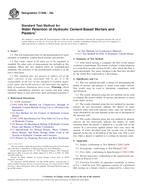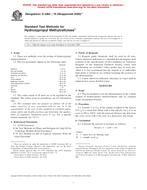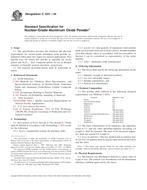1.1 This test method covers dc ballistic testing for the determination of basic magnetic properties of materials in the form of ring, toroidal, link, double-lapped Epstein cores, or other standard shapes which may be cut, stamped, machined, or ground from cast, compacted, sintered, forged, or rolled materials. It includes tests for normal induction and hysteresis taken under conditions of steep wavefront reversals of the direct-current magnetic field strength.
1.2 This test method shall be used in conjunction with Practice A 34/A 34M.
1.3 This test method is suitable for a testing range from very low magnetic field strength up to 200 or more Oe [15.9 or more kA/m]. The lower limit is determined by integrator sensitivity and the upper limit by heat generation in the magnetizing winding. Special techniques and short duration testing may extend the upper limit of magnetic field strength.
1.4 Testing under this test method is inherently more accurate than other methods. When specified dimensional or shape requirements are observed, the measurements are a good approximation to absolute properties. Test accuracy available is primarily limited by the accuracy of instrumentation.
1.5 This test method permits a choice of test specimen to permit measurement of properties in any desired direction relative to the direction of crystallographic orientation without interference from external yoke systems.
1.6 The symbols and abbreviated definitions used in this test method appear in and Sections 5, 6, 9, and 10. For the official definitions see Terminology A 340. Note that the term flux density used in this document is synonymous with the term magnetic induction.
1.7 The values stated in either customary (cgs-emu and inch-pound) units or SI units are to be regarded separately as standard. Within this test method, the SI units are shown in brackets except for the sections concerning calculations where there are separate sections for the respective unit systems. The values stated in each system are not exact equivalents; therefore, each system shall be used independently of the other. Combining values from the two systems may result in nonconformance with this method.
1.8 This standard does not purport to address all of the safety concerns, if any, associated with its use. It is the responsibility of the user of this standard to establish appropriate safety and health practices and determine the applicability of regulatory limitations prior to use.
Product Details
- Published:
- 10/01/2004
- Number of Pages:
- 8
- File Size:
- 1 file , 73 KB


